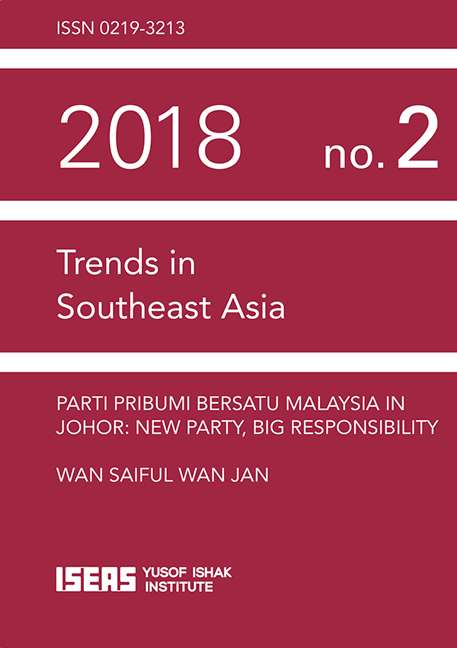Parti Pribumi Bersatu Malaysia in Johor: New Party, Big Responsibility
Published online by Cambridge University Press: 12 February 2019
Summary
EXECUTIVE SUMMARY
• Parti Pribumi Bersatu Malaysia (PPBM) was officially launched on 14 January 2017, led by prominent personalities including former Prime Minister Mahathir Mohamad, former Deputy Prime Minister Muhyiddin Yassin, and former Kedah Chief Minister Mukhriz Mahathir.
• Upon establishment, the party immediately announced that they are aiming to win the southern state of Johor in the upcoming general election. Historically, UMNO splinter parties have never been able to threaten UMNO in this state. Since independence, Johor has always been seen as an UMNO bastion.
• PPBM has moved quickly to establish themselves in all parliamentary and state constituencies in Johor, however, and it has been rather successful in attracting support from those aged below 35. Their key challenge remains the rural and female voters.
• Identity politics is a major hurdle for PPBM. The presence of the Democratic Action Party (DAP) in the Pakatan Harapan coalition — of which PPBM is a member — is a hurdle in attracting Malay support. Among Malay voters, DAP is perceived as a threat to Malay privileges.
• At the same time, PPBM leaders in Johor believe that their contribution towards the coalition is not yet fully recognized by their coalition partners who insist that PPBM contests only in constituencies with a large Malay population. Areas with a high percentage of Malay voters are difficult for PPBM to win because UMNO tends to enjoy huge support in such constituencies, and PPBM leaders argue that they deserve more mixed seats to run in as well.
• Winning Johor, or some other state, is crucial for PPBM. Should the coalition fail to win at the federal level, PPBM will need a base to avoid disintegration.
- Type
- Chapter
- Information
- Parti Pribumi Bersatu Malaysia in Johor , pp. vii - viiiPublisher: ISEAS–Yusof Ishak InstitutePrint publication year: 2018



